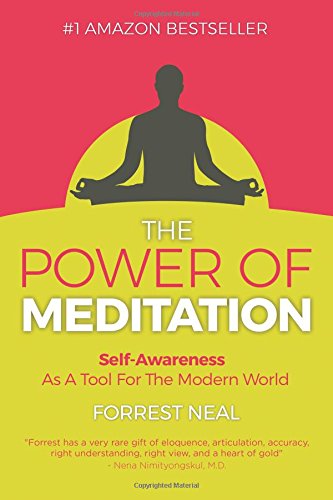
Breathing meditations can help relieve stress, anxiety, and depression. Your breath is a natural meditative tool and is always there for you. You can use the power of your breath to calm your emotions or unleash your creativity. Focusing on your breath will help you feel more grounded and clear-headed. Try practicing these exercises whenever you feel overwhelmed. These tips will make these exercises more effective: Pay attention to where your breath is coming and hold it for 2 to 3 minutes.
Breathing meditations are a great way to increase self-awareness. Because you must focus on your breath, practicing breathing meditations can help with self-reflection. This helps you be more aware your thoughts and your body's reactions. Paying attention to your breathing will help you notice how you react in stressful situations. You will be able to increase awareness of your body, mind and emotions by doing these things.

A breathing meditation is a way to help you focus on your breath. Start by closing your eyes and counting your breaths. Your mind might wander from time to time, which is completely normal. If you do notice your mind wandering, repeat the exercise and return to your breathing. Because they increase concentration and calm the mind, deep breathing exercises can be beneficial for all ages, even children. You may feel more relaxed and centered.
This will make you more aware of how your mind tends to focus on other issues as you practice the breathing meditations. This will allow you to be more aware of your mind’s tendencies and help you let go. This is a great technique to start the journey towards peace and relaxation. Take the time to breathe deeply. There are many benefits to learning to meditate with the breath. It can help you get a sense of peace and tranquility.
It can allow you to observe your mind. It allows you to see its impermanence and dissatisfaction. It's normal to have many thoughts in your mind. But the practice of mindfulness can help you to recognize these thoughts without resisting them. You will be able to pay attention to your body's sensations. Your mind will be more relaxed when you practice mindfulness. Your discomfort and pain will go away, and you'll be able experience true happiness.

Breathing Meditations can have a profound effect on your mind. Breathing meditations can help you to feel calm and relaxed. You can focus on your exhaling if you are concerned about sleeping. This will allow you to focus on your breathing and help you relax. You can also use imagery to help you sleep better. If you are having trouble sleeping, try lying down flat on your back. Focus on your exhalation and relax. This will allow your body to become more in touch with the mattress and help you feel more comfortable.
FAQ
Exercise: Good for immunity or not?
Exercise is good to your immune system. Exercise increases white blood cell production, which helps fight off infection. You also get rid of toxins from your body. Exercise is a great way to prevent heart disease, cancer, and other diseases. It also reduces stress levels.
But, too much exercise can lead to a weakening of your immune system. If you work out too hard, your muscles become sore. This can cause inflammation and swelling. The body then needs to make more antibodies to fight infection. Problem is, extra antibodies can trigger allergies and other autoimmune conditions.
So, don't overdo it!
Do I need to count calories?
You might be asking "What is the best diet?" or "is counting calories necessary?" Well, the answer depends on several factors including your current health status, your personal goals, your preferences, and your overall lifestyle.
The Best Diet - Which One Is Right To You?
My current health, my personal goals and lifestyle will determine the best diet for me. There are many diets out there, some good and some bad. Some diets work better than others. So what should I do? How do I make the right decision?
These are the main questions addressed by this article. It begins by briefly describing the various diets available today. After that, you will learn about the pros and disadvantages of each type. Then, we will discuss which diet is the best.
Let's begin by briefly reviewing the different types and diets.
Diet Types
There are three types of diets available: ketogenic, high-protein, and low fat. Let's talk about them briefly.
Low Fat Diets
A low-fat diet restricts fat intake. This is achieved through reducing intakes of saturated fats (butter and cream cheese, for example). It is possible to replace these saturated fats with unsaturated ones (olive oil or avocados). A low fat diet is often recommended for those who want to lose weight quickly and easily. This type of diet can lead to constipation and heartburn as well as indigestion. It can also lead to vitamin deficiencies, if someone doesn't get enough vitamins in their food.
High Protein Diets
High protein diets discourage carbohydrates and encourage the use of proteins. These diets have higher protein levels than other diets. These diets can help increase muscle mass and decrease calories. However, they might not provide enough nutrition for those who need to eat frequently. They can also be very restrictive so they may not be suitable for everyone.
Ketogenic Diets
Also known as keto diets, ketogenic diets are also called keto diets. They are high in fat, moderately high in protein and low in carbohydrates. These are often used by bodybuilders and athletes because they allow them the ability to train harder and for longer periods of time without feeling tired. To avoid side effects such as fatigue, nausea, headaches, or other unpleasant side effects, you must strictly adhere to their instructions.
What is the difference between calories and kilocalories in food?
Calories are units that measure how much food has energy. A calorie is a unit of measure. One calorie contains the energy needed to raise the temperature of one gram of water by one degree Celsius.
Kilocalories refer to calories in another term. Kilocalories are expressed in thousandths (or a calorie). 1000 calories is one kilocalorie.
What should my weight be for my age and height? BMI calculator & chart
Calculating your body mass index (BMI), is the best method to calculate how much weight to lose. The range of a healthy BMI is between 18.5- 24.9. Weight loss is possible if you aim to lose approximately 10 pounds per week. Simply enter your height, weight and desired BMI into the BMI calculator to calculate it.
This BMI chart shows you if it is possible to identify if you are either overweight or obese.
Statistics
- This article received 11 testimonials and 86% of readers who voted found it helpful, earning it our reader-approved status. (wikihow.com)
- nutrients.[17]X Research sourceWhole grains to try include: 100% whole wheat pasta and bread, brown rice, whole grain oats, farro, millet, quinoa, and barley. (wikihow.com)
- According to the Physical Activity Guidelines for Americans, we should strive for at least 150 minutes of moderate intensity activity each week (54Trusted Source Smoking, harmful use of drugs, and alcohol abuse can all seriously negatively affect your health. (healthline.com)
- WHO recommends reducing saturated fats to less than 10% of total energy intake; reducing trans-fats to less than 1% of total energy intake; and replacing both saturated fats and trans-fats to unsaturated fats. (who.int)
External Links
How To
What does "vitamin" actually mean?
Vitamins are organic substances found naturally in food. Vitamins aid us in absorbing nutrients from the food we eat. Vitamins are not made by the body, so they must be obtained through food.
There are two types: water-soluble and fat-soluble vitamins. Water-soluble vitamins dissolve easily when they are dissolved in water. These include vitamin C (thiamine), Vitamin B1 (riboflavin), Vitamin B2 (riboflavin), Vitamin B3 (niacin), Vitamin B6 (pyridoxine), Vitamin C, B1 (thiamine), Vitamin B2 (riboflavin), Vitamin B3 (niacin), and Vitamin B6 (pyridoxine). Fat-soluble vitamins can be stored in the liver or in fatty tissue. You can find vitamin D, E K, A, beta carotene, and other fat-soluble vitamins.
Vitamins are classified based on their biological activity. There are eight major types of vitamins:
-
A - Vital for normal growth and maintaining good health.
-
C is important for nerve function and energy production.
-
D – Essential for healthy teeth, bones and joints
-
E is necessary for good vision, reproduction.
-
K - Required for healthy nerves and muscles.
-
P - vital for building strong bones andteeth.
-
Q - aids digestion, absorption and absorption iron
-
R - Required for red blood cell production
The recommended daily allowance (RDA), for vitamins, varies depending upon age, gender, or physical condition. The U.S. Food and Drug Administration, (FDA), sets the RDA value.
For adults 19 years and over, the RDA of vitamin A is 400mg per day. Because it is essential for the development of the fetus, pregnant women should consume 600 micrograms per daily. Children ages 1-8 require 900 micrograms per day. Babies under one-year old require 700 mg per day. Between 9 and 12 years of age, however, this drops to 500 mg per day.
Children between the ages 1--18 years old who are overweight or obese require 800 micrograms per Day, while those who are overweight or obese need 1000 micrograms. To meet their nutritional needs, children underweight and obese require 1200 micrograms a day.
Children 4-8 years old who have anemia must consume 2200 micrograms of Vitamin C daily.
2000 micrograms is the minimum daily intake for adults over 50 years old to maintain good health. Breastfeeding or pregnant women require 3000 micrograms per daily due to higher nutrient demands.
Adults over 70 require 1500 micrograms each day, since they lose around 10% of their muscle mass every decade.
Women who are pregnant or nursing need more than the RDA. Pregnant woman need 4000 micrograms daily in pregnancy, and 2500 per day after childbirth. Breastfeeding mothers need to consume 5000 micrograms every day when breastmilk has been produced.